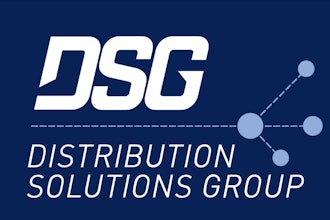When the COVID-19 pandemic first became widespread across the United States in March, distributors were immediately tasked with keeping the country’s supply chain moving. It’s been a massive responsibility ever since, and made all the more difficult by these distributors having to adjust their own operations just to stay safe while still trying to turn a profit.
Throughout the spring and even into the fall of 2020, headlines from publicly-traded distributors and suppliers frequently were led by announcements of cost-cutting measures these companies had to take, at least temporarily, to ease the financial burden of operating in this new environment. This included salary and compensation cuts company-wide, furloughs and hiring freezes and even the divestment of less profitable business units.
The degree of difficulty this has presented was illustrated in the results of a new survey Industrial Distribution conducted in October, where we polled nearly 100 distribution executives and managers about how the pandemic has impacted their operations and technology usage. In ID’s survey, almost 77 percent of respondents said their company was evaluating new cost-cutting measures as a means of combating sales slumps.
Cost reduction can take many forms for distributors, and sadly, these often apply to labor. Asked to choose what cost savings measures they’ve taken or are considering, 37 percent of our respondents picked job cuts, while 28 percent picked salary cuts. But somewhat surprisingly, those weren’t in the top two options chosen.
The most popular cost-cutting measure selected was negotiating with suppliers on price, terms or inventory issues, chosen by 57 percent of our distributor respondents, followed by reevaluating supply chains at nearly 40 percent. A quarter of our respondents indicated they’ve taken or are considering other cost cuts in the form of decreasing hours, overtime, capital spending and non-essential spending, as well as streamlining redundant operations and using e-commerce as much as possible.
Distributors have been notoriously slow when it comes to adopting technology, compared to the B2C world. But if there was ever a time for distributors to pick up the pace, a global pandemic that has caused a massive slowdown in general business activity is certainly it. We asked our survey respondents if COVID-19 has accelerated their plans for technology adoption, and more than 61 percent said yes. It’s unfortunate that it often takes dramatic economic events to spur the distribution landscape into action, but it appears that the pandemic has served as a wake-up call nonetheless.
So, what kinds of technology are distributors planning to invest in? We asked this in our survey but left it open-ended. The most popular write-in answers centered around e-commerce, with a fairly even split between acquiring software to start a platform, or investing more funding into an existing platform. Remote working tools was another frequently-mentioned technology, virtual meeting, training and demonstration platforms. And as expected, ERP and CRM were also popular answers, with respondents saying they want to leverage those software tools to improve their customer database, leads information and marketing automation, along with utilizing the cloud.
Throughout the pandemic, especially during the early spring when demand for certain product lines like PPE spiked while demand for aerospace supplies plummeted, we at ID heard from numerous distributors that said forecasting technology became vital for them to stay on top of these volatile swings in end markets. (Q7 Chart) So we asked our audience if the same was true for them or if they plan to invest in this area. And while 68 percent of our respondents said no, that still means that nearly one-third of our distribution executives and managers respondents said forecasting technology is indeed crucial.
And while many distributors — at least in the industrial products sector — have taken a major financial hit throughout 2020, there are reasons for market optimism. The Institute for Supply Management’s monthly Purchasing Managers Index — widely regarded as a reliable barometer for the US manufacturing economy — has steadily improved since bottoming out in April in May. In October, the PMI recorded its best mark since September of 2018 and its second biggest one-month jump in more than 11 years.
Likewise, FCH Sourcing Network's monthly Fastener Distributor Index showed considerably faster expansion in October, and the US Commerce Department’s latest construction spending figures also showed solid gains through the early fall.
But even if business conditions continue to improve, the pandemic has shown as the biggest case study in decades as to distributors’ preparedness level for major disruption. Its scale is unprecedented, and it’s revealed just how important modern technology is when navigating times of uncertainty.
Plenty of major distributors have struggled to adapt to current conditions, and I have to assume it’s even harder on the thousands of small and mid-sized companies that comprise the vast majority of this market. It also stands to reason that the distributors that already had modern technology in place pre-2020 have been able to not just get by during the pandemic, but take market share in the process from those competitors that have been slower to adapt.
Perhaps the one positive the distribution sector can take from this pandemic is that it’s served as a much-needed wake-up call and call-to-action for adding or upgrading modern technology in their operations.
Be sure to check out part two of this video, where we explore more exclusive data from our survey and what it means for distributors navigating pandemic impacts. I’m Mike Hockett for Industrial Distribution, and thanks for watching.






















